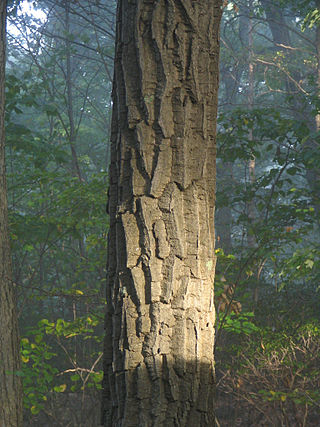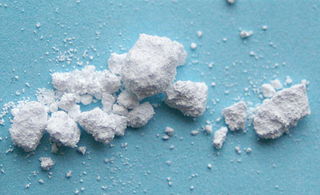The field of strength of materials typically refers to various methods of calculating the stresses and strains in structural members, such as beams, columns, and shafts. The methods employed to predict the response of a structure under loading and its susceptibility to various failure modes takes into account the properties of the materials such as its yield strength, ultimate strength, Young's modulus, and Poisson's ratio. In addition, the mechanical element's macroscopic properties such as its length, width, thickness, boundary constraints and abrupt changes in geometry such as holes are considered.

Stepan Prokopovich Timoshenko, later known as Stephen Timoshenko, was an ethnic Ukrainian, citizen of the Russian Empire and later, an American engineer and academician.

Benjamin Graham was a British-born American economist, professor and investor. He is widely known as the "father of value investing", and wrote two of the founding texts in neoclassical investing: Security Analysis (1934) with David Dodd, and The Intelligent Investor (1949). His investment philosophy stressed investor psychology, minimal debt, buy-and-hold investing, fundamental analysis, concentrated diversification, buying within the margin of safety, activist investing, and contrarian mindsets.
The McGraw-Hill Encyclopedia of Science & Technology is an English-language multivolume encyclopedia, specifically focused on scientific and technical subjects, and published by McGraw-Hill Education. The most recent edition in print is the eleventh edition, copyright 2012 (ISBN 9780071778343), comprising twenty volumes. The encyclopedia covers the life sciences and physical sciences, as well as engineering and technology topics. The content is also available via a subscription to McGraw-Hill Education's website.
A movement is a self-contained part of a musical composition or musical form. While individual or selected movements from a composition are sometimes performed separately as stand-alone pieces, a performance of the complete work requires all the movements to be performed in succession. A movement is a section, "a major structural unit perceived as the result of the coincidence of relatively large numbers of structural phenomena".
A unit of a larger work that may stand by itself as a complete composition. Such divisions are usually self-contained. Most often the sequence of movements is arranged fast-slow-fast or in some other order that provides contrast.
While the ultimate harmonic goal of a tonal composition is the final tonic triad, there will also be many interior harmonic goals found within the piece, some of them tonic triads and some of them not. ...We use the term cadence to mean a harmonic goal, specifically the chords used at the goal.

Tan is a pale tone of brown. The name is derived from tannum used in the tanning of leather.

In physical sciences, mechanical energy is the sum of potential energy and kinetic energy. The principle of conservation of mechanical energy states that if an isolated system is subject only to conservative forces, then the mechanical energy is constant. If an object moves in the opposite direction of a conservative net force, the potential energy will increase; and if the speed of the object changes, the kinetic energy of the object also changes. In all real systems, however, nonconservative forces, such as frictional forces, will be present, but if they are of negligible magnitude, the mechanical energy changes little and its conservation is a useful approximation. In elastic collisions, the kinetic energy is conserved, but in inelastic collisions some mechanical energy may be converted into thermal energy. The equivalence between lost mechanical energy and an increase in temperature was discovered by James Prescott Joule.

Strontium oxide or strontia, SrO, is formed when strontium reacts with oxygen. Burning strontium in air results in a mixture of strontium oxide and strontium nitride. It also forms from the decomposition of strontium carbonate SrCO3. It is a strongly basic oxide.

Introduction to Algorithms is a book on computer programming by Thomas H. Cormen, Charles E. Leiserson, Ronald L. Rivest, and Clifford Stein. The book has been widely used as the textbook for algorithms courses at many universities and is commonly cited as a reference for algorithms in published papers, with over 10,000 citations documented on CiteSeerX. The book sold half a million copies during its first 20 years. Its fame has led to the common use of the abbreviation "CLRS", or, in the first edition, "CLR".

Goodman & Gilman's The Pharmacological Basis of Therapeutics, commonly referred to as the Blue Bible or Goodman & Gilman, is a textbook of pharmacology originally authored by Louis S. Goodman and Alfred Gilman. First published in 1941, the book is in its thirteenth edition, and has the reputation of being the "bible of pharmacology". The readership of this book include physicians of all therapeutic and surgical specialties, clinical pharmacologists, clinical research professionals and pharmacists.

In electrical engineering, dot marking convention, or alphanumeric marking convention, or both, can be used to denote the same relative instantaneous polarity of two mutually inductive components such as between transformer windings. These markings may be found on transformer cases beside terminals, winding leads, nameplates, schematic and wiring diagrams.

Stephen L. Harris was Professor of Humanities and Religious Studies at California State University, Sacramento. He served there ten years as department chair and was named a Woodrow Wilson Fellow. He received his MA and PhD degrees from Cornell University. Harris was a member of the American Academy of Religion, a fellow at the Westar Institute, a fellow of the controversial Jesus Seminar, and authored several books on religion, some of which are used in introductory university courses.

In geology, a platform is a continental area covered by relatively flat or gently tilted, mainly sedimentary strata, which overlie a basement of consolidated igneous or metamorphic rocks of an earlier deformation. Platforms, shields and the basement rocks together constitute cratons. Platform sediments can be classified into the following groups: a "protoplatform" of metamorphosed sediments at the bottom, a "quasiplatform" of slightly deformed sediments, a "cataplatform", and an "orthoplatform" at the top. The Mesoproterozoic Jotnian sediments of the Baltic area are examples of a "quasiplatform". The post-Ordovician rocks of the South American Platform are examples of an orthoplatform.

A shingle beach, also known as either a cobble beach or gravel beach, is a commonly narrow beach that is composed of coarse, loose, well-rounded, and waterworn gravel, called shingle. The gravel (shingle) typically consists of smooth, spheroidal to flattened, pebbles, cobbles, and sometimes small boulders, generally in the 20 to 200 millimetres size range. Shingle beaches typically have a steep slope on both their landward and seaward sides. Shingle beaches form in wave-dominated locations where resistant bedrock cliffs provide gravel-sized rock debris. They are also found in high latitudes and temperate shores where the erosion of Quaternary glacial deposits provide gravel-size rock fragments. This term is most widely used in Great Britain.
In mathematical analysis, a domain or region is a non-empty connected open set in a topological space, in particular any non-empty connected open subset of the real coordinate space Rn or the complex coordinate space Cn. A connected open subset of coordinate space is frequently used for the domain of a function, but in general, functions may be defined on sets that are not topological spaces.
Gnathophyma involves swelling of the chin. It is a type of lesion associated with rosacea, a common chronic inflammatory skin disorder of the sebaceous glands characterized by redness, swelling, and acne-like pustules.
Donald Glen Fink was an American electrical engineer, a pioneer in the development of radio navigation systems and television standards, vice president for research of Philco, president of the Institute of Radio Engineers, General Manager of the IEEE, and an editor of many important publications in electrical engineering.

Icelandite is a type of volcanic rock, an andesite that is enriched in iron but deficient in aluminium (< 16.5% Al2O3). Icelandites are between rhyodacite and tholeiitic basalt in composition and contain andesine, hypersthene and augite, with a silica (SiO2) content greater than 60%.











